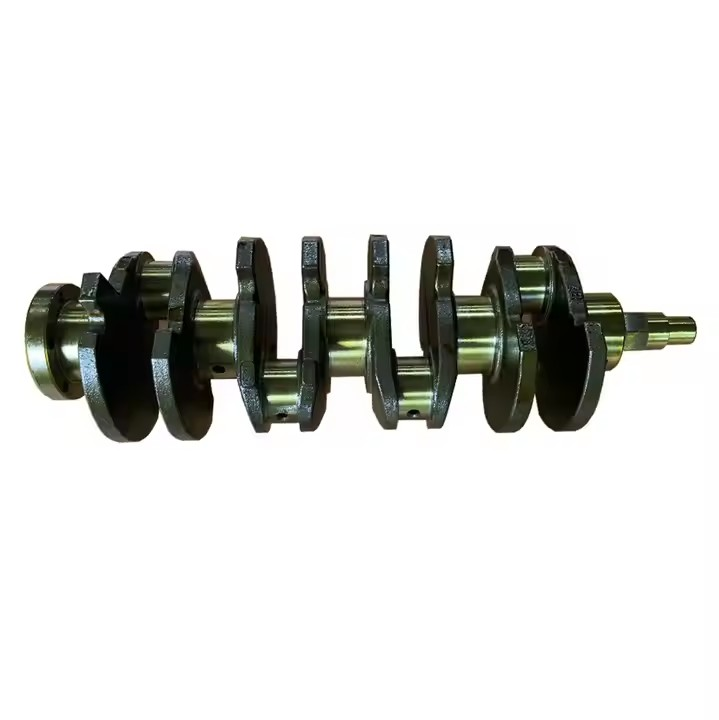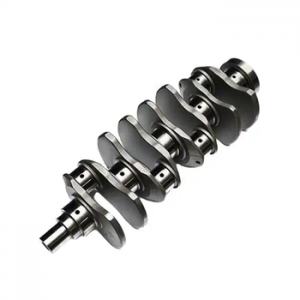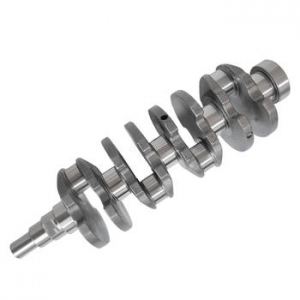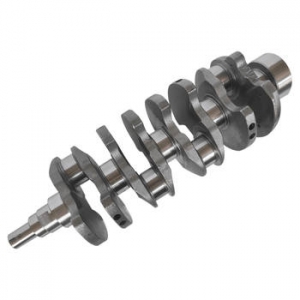What is Crankshaft Casting?
Crankshaft casting is a manufacturing process used to create crankshafts for internal combustion engines. The crankshaft is a critical component that converts the reciprocating motion of the pistons into rotational motion, which drives the vehicle's wheels. Crankshaft casting involves melting metal alloys and pouring them into a mold to create the desired shape.
Types of Crankshaft Casting Processes
There are two main types of crankshaft casting processes: sand casting and die casting. Sand casting is a traditional process that involves creating a sand mold and pouring molten metal into it. The sand mold is made by packing sand around a pattern that represents the shape of the crankshaft. Once the sand is compacted, the pattern is removed, leaving a cavity in the shape of the crankshaft. Molten metal is then poured into the cavity, allowed to cool, and the sand mold is broken away, leaving the finished crankshaft.
Die casting, on the other hand, uses a metal mold to create the crankshaft. The metal mold is made from two halves that are machined to the exact shape of the crankshaft. Molten metal is then injected into the mold under high pressure, and the mold is quickly cooled to solidify the metal. Once the metal has solidified, the mold is opened, and the finished crankshaft is ejected.
Both sand casting and die casting have their advantages and disadvantages. Sand casting is a versatile and cost-effective process that can produce complex shapes with tight tolerances. However, it is not suitable for high-volume production due to the time-consuming nature of creating sand molds. Die casting, on the other hand, is a faster and more efficient process that can produce high volumes of crankshafts with excellent dimensional accuracy and surface finish. However, it requires expensive tooling and equipment, making it less cost-effective for low-volume production.
Materials Used in Crankshaft Casting
The choice of material used in crankshaft casting plays a crucial role in the overall performance of the engine. The most commonly used materials are gray iron, ductile iron, and steel. Gray iron is the most popular due to its excellent machinability, good wear resistance, and low cost. Ductile iron, also known as nodular iron, has higher strength and ductility than gray iron, making it suitable for high-performance engines. Steel is used in high-end engines due to its superior strength and stiffness.
Gray iron is an alloy of iron, carbon, silicon, and manganese. The carbon content is typically between 2.5% and 4%, and the silicon content is between 1% and 3%. Gray iron has excellent machinability, making it easy to machine to tight tolerances. It also has good wear resistance, which makes it suitable for use in engine components that are subject to high wear and tear.
Ductile iron, on the other hand, has a nodular graphite structure that gives it higher strength and ductility than gray iron. The nodular graphite structure is created by adding magnesium or cerium to the molten iron. Ductile iron has a higher tensile strength than gray iron, making it suitable for use in high-performance engines.
Steel is an alloy of iron and carbon, with a carbon content of up to 2%. Steel has a higher strength and stiffness than both gray iron and ductile iron, making it suitable for use in high-end engines. However, it is more expensive and difficult to machine than gray iron and ductile iron.
Advantages of Crankshaft Casting
Crankshaft casting offers several advantages over other manufacturing processes. It allows for the creation of complex shapes with tight tolerances, making it ideal for large-scale production. The process is also cost-effective, as it requires minimal tooling and equipment. Additionally, crankshaft casting produces parts with excellent surface finish and dimensional accuracy.
Another advantage of crankshaft casting is that it allows for the use of a variety of materials, including gray iron, ductile iron, and steel. This allows manufacturers to choose the material that best meets their performance and cost requirements. Additionally, crankshaft casting can be used to create both small and large-scale production runs, making it a versatile manufacturing process.
Applications of Crankshaft Casting
Crankshaft casting is widely used in the automotive industry to manufacture crankshafts for cars, trucks, and other vehicles.





